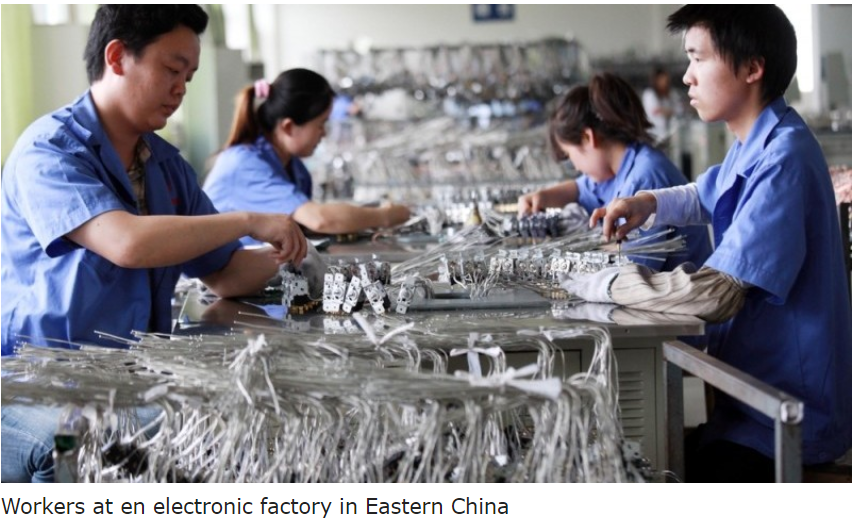Et stort fald i importen til Kina i maj på 16,7 pct. tyder på en meget svag eksport i de kommende måneder, da importen altid er stærkt knyttet til eksporten. Det tyder på, at mange aftagere af kinesiske produkter stadig er hårdt ramt af coronakrisen, og alt i alt er det tegn på, at den globale genopretning bliver langvarig. Der var et kraftigt fald af import til elektronikindustrien. Det tyder på, at handelskrigen med USA begynder at bide, fordi USA vil begrænse kinesisk elektronikeksport.
China imports shrank the fastest since 2016
Imports shrank by 16.7% year-on-year in May, which is the deepest contraction since January 2016 when imports shrank 19.5% YoY.
Though exports shrank only slightly in May (-3.3% YoY), the deep dive of imports means that exports in the coming months will be weak. This is because some imports are used as parts for export products. This also implies foreign buyers did not expect a rebound of demand for their products.
Another reason that exports were less dismal than imports is because of some Covid-19 related shipments, eg, garments and textiles and medical supplies, which rose 41% month on month in May after +64% MoM in April, and increased 38% MoM in May after +41% MoM in April, respectively.
Demand for these Covid-19 related goods and supplies should slow down when Covid-19 subsides. This is also one of the reasons we believe that this less dismal export growth may not be sustainable.
Electronics could be hit hard
In this note, we would like to focus on the trade of electronics as they contribute around half of the total trade of China. Mechanical and electrical products contributed 58% of total exports and 47% of total imports.
Imports of this category fell 7% YoY in May, and this is even after a low base effect from last year, which was -11% YoY in May 2019. In other words, without the base effect, imports of mechanical and electronic parts would fall even deeper in May 2020.
In dollar terms, imports of mechanical and electrical products fell to a very low level of US$68.11 billion in May. The last time we saw a lower amount was in February 2018 and 2019, which was reasonable as the Chinese New Year fell in those months. Then it was back in May 2017, which recorded US$66.91 billion for imports of this category, when it was below the current level.
The most important trade item, mechanical and electronic products, has been in bad shape as global demand for the upgrade of gadgets is shrinking.
Remote work arrangements have induced some demand for laptops, pads, and accessories like cameras and microphones, but these are not the major products that have driven strong growth in electronics over the past years. This could change if remote work is the new norm, and could provide a bit of support for electronics for a few years.
But the main growth engine for electronics has come from smartphone upgrades. Before the outbreak of Covid-19 we had expected that 2020 would have been a boom year for handsets and other gadgets due to 5G.
Now, this demand is obviously deferred by high unemployment in most major economies. As such, demand for electronic parts and equipment for producing advanced technological products should be dismal. Because of mechanical and electronic parts’ large contribution to global trade, overall exports and imports will be under pressure until global consumption picks up.
Technology war will dampen trade growth
The technology war is once again one of the frictions between the US and China. China claims that it will retaliate against the US’ action of including 33 Chinese entities to its “entity list” of export controls, which should hurt the transfer of technology.
China’s spokesman from the Ministry of Commerce said that China “will take all necessary measures to safeguard Chinese companies’ legitimate rights and interests“. If China retaliates with its own unreliable entity list of US companies, likely to include some US technology companies, there will be even less trade of technological parts and products between US and China.
Hopefully, other economies will fill the gap of the trade of technology, otherwise, the technology war will hurt the trade of technology parts and products even more, and could last longer.
USDCNY is not a tool for retaliation
We don’t think the People’s Bank of China, China’s central bank, will use the exchange rate to help exports or as a tool for retaliation.
Yuan depreciation cannot change the landscape of weak global demand and cannot slow down friction between the US and China. These two are the key problems now faced by Chinese exporters.
The PBoC is expected to allow USDCNY to move with the dollar index in tandem. This will give some transparency to the market. More importantly, the PBoC will not shock the market like it did in 2015, which created market chaos when there are many uncertainties from Covid-19 and friction between the US and China.
We keep our forecast of USDCNY for the end of 2020 at 7.05.








